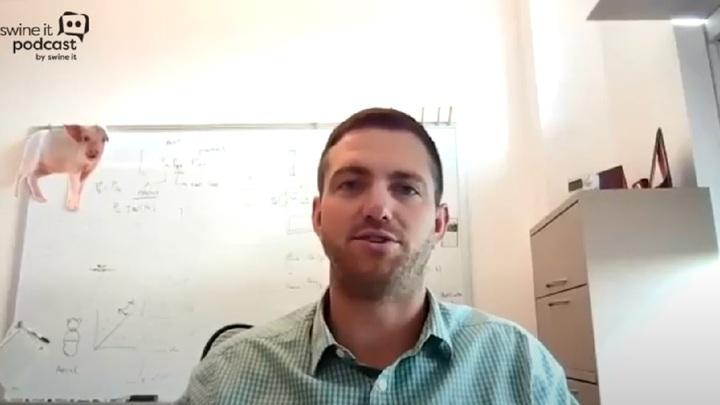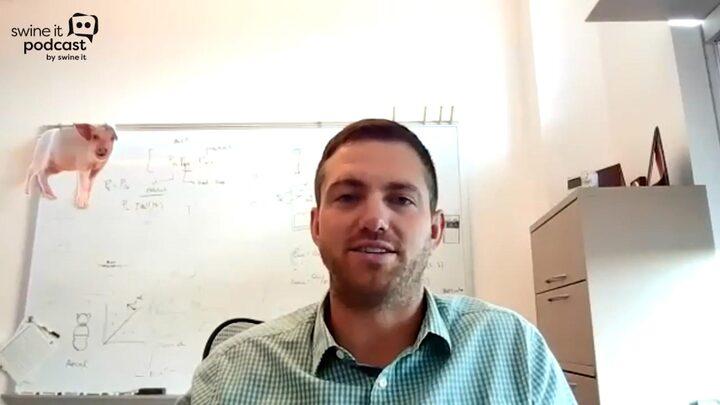Explore all the information on
Swine management
Welcome to the page about Swine management of Engormix; a source of knowledge on Swine management.
Introduction: Hoof lesions, which are very common in modern sows, were associated with high risk of early culling and compromised welfare of sows. Some hoof lesions were also associated with decreased litter weight, increased pre-weaning piglet mortality and higher odds of stillborn and crushed piglets. Evidently, if hoof lesions negatively affect not only sow longevity but also the important reproductive parameters which determine the utilisation of breeding herd’s...
Comments : 0
Recommendations: 0
Introduction: Extended-spectrum penicillins have a similar spectrum of activity to 2nd and 3rd generation cephalosporins and they include aminopenicillins such as amoxicillin and ampicillin and amoxicillin in combination with clavulanic acid. Bacterial resistance to extended-spectrum penicillins has evolved rapidly in recent years specially in Enterobacteriaceae because these bacteria could carry beta-lactamases capable of hydrolyzing important beta-lactam...
Comments : 0
Recommendations: 0
Recommended events
May 14, 2024
Canada - Manitoba - Winnipeg
Introduction: In sows and weaned pigs, oral fluids (OF) are usually sampled with cotton ropes and used for serological analysis or direct identification of pathogens. OF sampling is easy, quick and of low stress for animals, being suitable for group diagnosis since OF samples represent a pool of saliva from different pigs from the same pen. The aim of this study was to investigate if it is feasible to collect OF samples from sucklers, in farrowing...
Comments : 0
Recommendations: 0
Introduction: Automatically collected feeder data may be used to predict tail biting in finisher pigs. Materials and Methods: Pen-level feeding behaviour and growth were investigated in relation to injurious tail biting (ITB), defined as visible wounds, from 10 weeks before to 4 weeks after the first ITB case in the pen. The data set included 36 pens of 10-12 intact boars between 43 and 148 kg, with average pen weight at ITB onset between 78 and 137 kg. A tail...
Comments : 0
Recommendations: 0
Introduction: An effective insemination management is the basis for a successful piglet production. Hormonal stimulation and synchronization is common practice in farms, mostly using equine chorionic gonadotropin (eCG). A FTI protocol is now available using Buserelin (Porceptal®, MSD Animal Health), a synthetic GnRH-analog compound. The main feature of this protocol is the requirement for only one insemination per sow. This study was conducted to compare the FTI with...
Comments : 0
Recommendations: 0
Introduction: Surveillance systems are critical for accurate and timely monitoring and effective disease control. The use of statistical quality control methods for monitoring endemic diseases which are part of compulsory surveillance programs has not been previously explored. It is important to monitor changes of for instance disease prevalence, which might indicate disease spread. Thus allowing control efforts to be triggered immediately. Materials and...
Comments : 0
Recommendations: 0
Introduction: Swine influenza outbreaks are usually recognized by the sudden appearance of respiratory signs and also by quick recovery of sick animals. However, influenza A virus (IAV) can endemically circulate without causing such typical clinical outbreaks. In addition, the complexity of influenza circulation in large multi-site and multi-source herds has not been well described. The objectives of this study were to describe the dynamics of IAV circulation in...
Comments : 0
Recommendations: 0
Introduction: The aetiology of tail biting is highly complex and its appearance in a herd can hardly be predicted. Thus, it becomes extremely important to recognise that tail biting is not a singular symptom. Cases of primary cannibalism are rather rare and need differentiation from cases of tail necrosis without support of other pigs, and from cases of secondary cannibalism as a result of primary necrosis of the tail. The aim of the present study was to show that tail necrosis...
Comments : 0
Recommendations: 0
Poor welfare can stem from a mismatch between challenges in the captive environment and those the animal, having evolved in a particular natural environment, is adapted to face. Most efforts to improve animal welfare involve reforming housing and husbandry to fit the animal. A complementary solution is to choose, or mold, the animal to better fit the environment. However, traits that are beneficial in one environment may be harmful in another, so this approach runs the risk of creating...
Comments : 0
Recommendations: 0
Introduction: In Germany farmers are legally obligated to monitor animal welfare indicators, and based on that, improve their conditions. Besides the difficulties in defining indicators, the comparable assessment is another challenge. Therefore in the poultry industry, camera systems have been installed in slaughterhouses to evaluate the foot pad condition with a software. The results are open to farmers as feedback and partly to veterinary departments. Such a system has...
Comments : 0
Recommendations: 0
.jpg&w=3840&q=75)
Todd Thurman (Swine Insights International) talks about gestation and lactation feed, the increased use of technology, and the importance of aligning nutrition and feeding strategies, in this Engormix interview....
Comments : 1
Recommendations: 0

John Carr (Apiam Animal Health/James Cook University) talks about his ideas on the farms of the future, during this Swine It interview with host Laura Greiner....
Comments : 0
Recommendations: 0

John Carr (Apiam Animal Health/James Cook University) comments on his experience as a consultant and working with clients, during this Swine It interview with host Laura Greiner....
Comments : 0
Recommendations: 0

John Carr (Apiam Animal Health/James Cook University) discusses daily activities of professional workers in swine farms, during this Swine It interview with host Laura Greiner....
Comments : 0
Recommendations: 0

Brett Ramirez (Iowa State University) comments on his experience implementing a ventilation system, during this Swine It interview with host Laura Greiner....
Comments : 0
Recommendations: 0

John Carr (Apiam Animal Health/James Cook University) talks about perimeter fences and the minimal biosecurity requirements, during this Swine It interview with host Laura Greiner....
Comments : 0
Recommendations: 0

Brett Ramirez (Iowa State University) highlights the importance of ventilation maintenance and information, during this Swine It interview with host Laura Greiner....
Comments : 0
Recommendations: 0

Brett Ramirez (Iowa State University) explains different aspects of ventilation and its costs, during this Swine It interview with host Laura Greiner....
Comments : 0
Recommendations: 0
Introduction Swine raising has changed considerably in the last 30 years with an increase in intensive production systems. Whereas intensive systems minimize production costs, the high animal densities can pose impacts to environments that have low soil absorption capacity (Kunz et al., 2009a; Vanotti et al., 2009). Thus, confined animal feeding operations (CAFOs) while reducing the production costs can increase the use of water and the environmental impacts associated with the...
Comments : 0
Recommendations: 0
1. Introduction Observational, technical, and analytical skills are necessary for veterinary physicians [1,2]. For professional praxis, for instance, observation as well as pattern recognition skills within the environment are important for detecting and treating relevant diseases and conditions [3,4]. Moreover, these skills are relevant as the environment, along with demographic factors, influences animal health [5]. Recognizing patterns in nature is crucial for proposing novel...
Comments : 0
Recommendations: 0






.jpg&w=3840&q=75)









